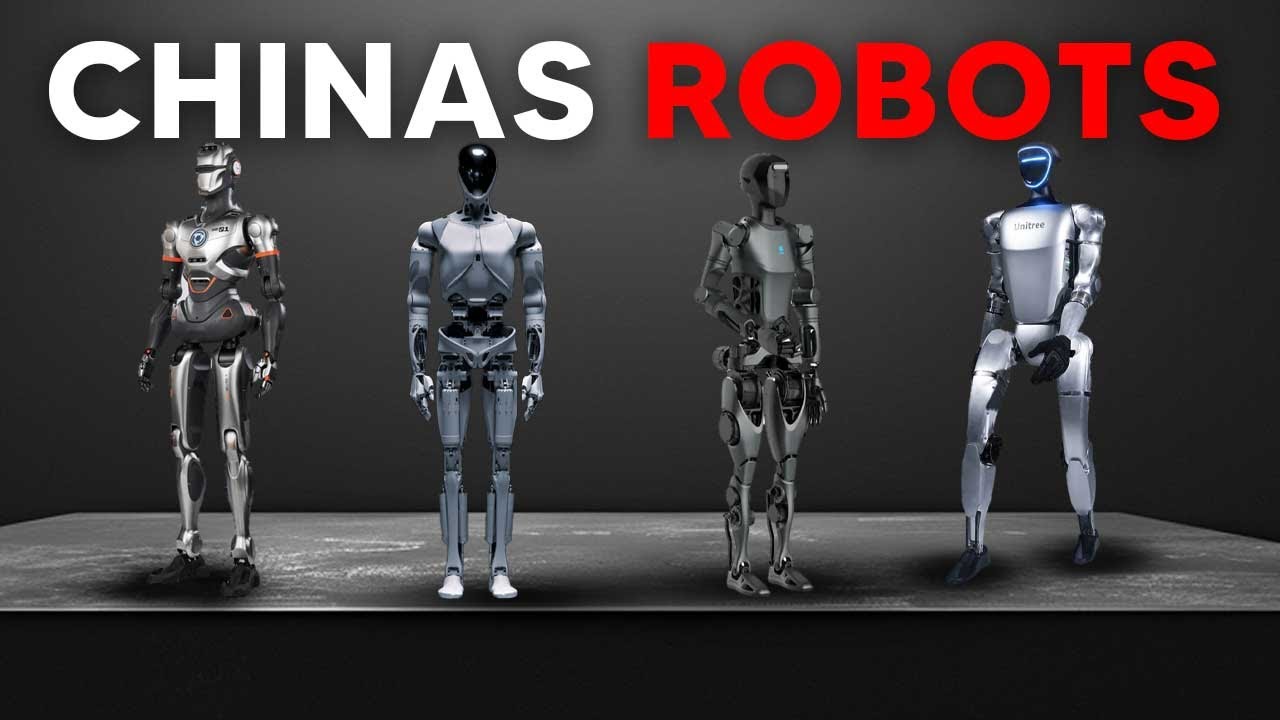The video showcases China’s rapid advancements in humanoid robotics, highlighting the top 10 Chinese robots projected for 2025, including versatile models like Unit G1, Astribore S1, Kepler 4Runner K2, and Engine AI’s PMO1, each designed for research, domestic, industrial, and research applications. It also features service-oriented robots like Pudu D9 and Flashbot Arm, illustrating China’s diverse efforts to integrate humanoid and semi-humanoid robots across various industries.
The video highlights China’s rapid advancements in humanoid robotics, showcasing a list of the top 10 Chinese humanoid robots projected for 2025. Leading the list is the Unit G1 by Unitary Robotics, an affordable, highly agile robot designed for research, education, and development. It features human-like movement capabilities such as walking, running, jumping, and engaging in physical combat, with advanced AI and customizable options like multi-fingered hands for precise manipulation. Its affordability and adaptability make it a standout in the field of humanoid robotics.
Next is the Astribore S1 by Stardust Intelligence, a home assistant robot aimed at domestic environments. It boasts seven degrees of freedom per arm, high speed, and precision, capable of tasks like cooking, cleaning, and pet care. Its AI-powered voice recognition, remote operation, and user-friendly design position it as a premium consumer robot. The S1 is set for commercial release in 2024, emphasizing its role in revolutionizing household assistance with speed, dexterity, and AI adaptability.
The list also features the Kepler 4Runner K2 by Shanghai Kepler Robotics, an industrial robot designed for manufacturing and logistics. With 52 degrees of freedom and high load capacity, it excels in complex tasks such as heavy object manipulation and assembly. Equipped with tactile sensors and advanced control systems, the K2 can autonomously refine its skills through cloud-based AI models, making it highly suitable for dynamic industrial environments and high-precision operations.
Engine AI’s PMO1 is another notable robot, emphasizing natural movement and open-source architecture. Standing at 138 cm with over 23 degrees of freedom, it features a 320° waist rotation and advanced neural network-based movement learning. Its powerful onboard computing, sensory systems, and interactive features make it a versatile platform for research and development, aiming to accelerate embodied AI robotics and broader adoption in research, education, and commercial sectors.
The final segment covers robots like the Pudu D9 and the Pudu Flashbot Arm, which focus on service and commercial applications. The Pudu D9 is a full-size humanoid robot designed for hospitality and logistics, capable of navigating complex terrains and performing autonomous tasks with advanced sensors and semantic mapping. Meanwhile, the Flashbot Arm is a semi-humanoid robot optimized for delivery and service tasks in indoor environments, combining mobility, manipulation, and AI-driven coordination. These robots demonstrate the diverse approaches China is taking to integrate humanoid and semi-humanoid robots into various industries.
